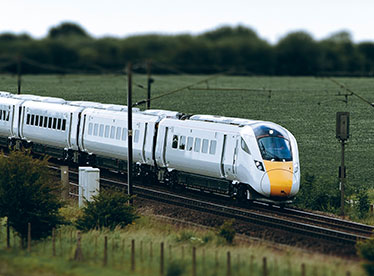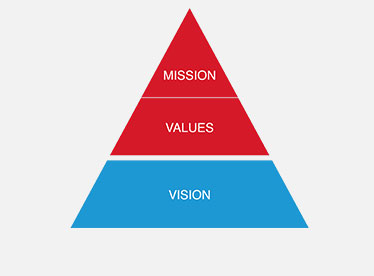-
Products
-
Transportation & Mobility Solutions
Transportation & Mobility Solutions
At Hitachi, we engineer industry-leading transportation and mobility solutions by leveraging decades of knowledge and using high-quality automotive material and components.
-
Energy Solutions
Energy Solutions
We believe the only solution for fulfilling the growing power requirements of industries and society is through a comprehensive portfolio of sustainable energy solutions and delivering innovative high-efficiency energy systems.
-
IT Infrastructure Services
IT Infrastructure Services
Hitachi’s state-of-the-art IT products and services are known to streamline business processes which result in better productivity and a higher return on investment (ROI).
-
Social Infrastructure: Industrial Products
Social Infrastructure: Industrial Products
Within the industrial sector, Hitachi is consistently delivering superior components and services, including industrial and automation solutions, useful in manufacturing facilities.
-
Healthcare & Life Sciences
Healthcare & Life Sciences
At Hitachi, we believe that healthcare innovation is crucial to a society’s advancement. A strong healthcare sector is often considered an inseparable element of a developed society.
-
Scientific Research & Laboratory Equipments
Scientific Research & Laboratory Equipments
Hitachi focuses on extensive research and development, transformative technology, and systems innovation to unfold new possibilities and create new value through scientific endeavors that strengthen the connection between science and social progress.
-
Smart Audio Visual Products
Smart Audio Visual Products
Since 1956, Hitachi audio visual products have provided state of the art solutions to consumers all over the world. It has been our pleasure to design competitive products at the lowest possible prices while maintaining our industry-leading quality standards for your comfort and enjoyment.
-
View All Products
Hitachi Products & Solutions
Hitachi, a technology leader in the U.S., offers a diverse set of products and solutions, and breakthrough technologies for smart manufacturing, green energy and mobility solutions that empower governments, businesses, and communities.
-
Transportation & Mobility Solutions
- Social Innovation Solutions
-
About Us
-
Hitachi in the U.S.A.
Hitachi in the U.S.A.
Discover information about the Hitachi group network across the Americas, upcoming events and sustainability endeavours, CSR policies, and corporate government relations.
-
About Hitachi Group
About Hitachi Group
Explore our leadership team, investor relations, environmental vision, and sustainability goals. Learn how Hitachi is leveraging its research & development capabilities for social innovation across industry verticals.
-
Hitachi in the U.S.A.
- News Releases
- Case Studies
- Careers
- R&D
America's Digital Transformation
The novel coronavirus pandemic has disrupted manufacturing operations on an unprecedented scale, laying bare the need for greater resiliency and flexibility in operations, supply chain management and workforce safety. If manufacturers are to guard against future disruptions and compete in an increasingly dynamic market, they must drive Digital Transformation on the factory floor. On October 6th Hitachi joined Washington Post Live to explore what Digital Transformation looks like in 2020. In a segment presented by Hitachi, Brad Surak, president of digital solutions for Hitachi Vantara, and Bryan Jones, CEO of JR Automation, joined Elise Labott of American University to discuss how manufacturers can protect the bottom line and achieve manufacturing resiliency by accelerating “human-centric Digital Transformation” in the pandemic era.
How are manufacturers building resiliency in operations? What does that look like now and evolving post pandemic?
Last spring, as the pandemic was scrambling supply chains and hobbling manufacturing operations across the globe, JR Automation pivoted rapidly, increasing automation in the immediate production of PPE and essential products to get critical infrastructure up and running as quickly as possible to accommodate growing demand. For JR Automation there was a level of responsibility in the way that technology was being provided, the digital solutions, the connectedness, the flexible automation that was being provided so that the equipment would have life and provide value after the fact. Jones explained that they are noticing the transition from providing the initial needs to the ongoing needs, and then the needs that we perceive are going to be coming, yet.
How has the pandemic changed the industry’s mindset around workplace safety?
“The industry has always taken safety very seriously and COVID has added to the risks that need to be managed in a manufacturing environment,” shared Surak. Hitachi has more than 400 manufacturing facilities around the world operated by 140,000 employees, so even before COVID-19, Hitachi was investing in ways to adapt and utilize technology to ensure safe conditions on the factory floor. “When the pandemic hit,” Surak explained, “we were able to leverage technology for additional safety-related use cases that now extended into social distancing, using technologies like Lidar, that can get a very good understanding of a space and can look at the distancing of the working population in the factory. To find the place in the assembly line where people are forced to violate the social distancing restrictions. These are technologies that we've been using for many years for other types of use cases. But what we’re doing now is really applying them to some of the COVID-related areas, and we're seeing the results.”

Using automation and remote operations, are we going to lose sight of the human element?
Jones said, “Digital Transformation doesn't mean displacing the worker, but rather how can we use it to complement and improve the workplace. It is the connectedness of our workforce. When teams are given better, real-time information, better decisions are made. And when better decisions are made, inefficiencies are eliminated, and the overall efficiency of the plant and the system improves greatly.” Now, more than ever, companies must consider their social impact, and the other event speakers examined how the pandemic has inspired not only a realignment of consumer patterns and behaviors, but also a collective reconsideration of social values. Joanna Coles, investor & entrepreneur, and Scott Galloway, professor of marketing at NYU Stern School of Business & host of “The Prof G Show,” discussed how working and learning remotely have fundamentally altered American society and emphasized the importance of closing a digital divide exacerbated by income inequality.
Powering Good: How is Hitachi leveraging “human-centric Digital Transformation”?
Through “human-centric Digital Transformation,” Hitachi is bolstering manufacturing resiliency and flexibility while putting workforce health and safety first. Hitachi technologies are safeguarding workers and empowering them to be more innovative on the factory floor, driving productivity, increasing output and propelling the economy in the pandemic-era. Surak explains, “It is not about replacing workers, it is about enhancing and empowering the workforce to continue to innovate. How Hitachi think about it is called the ‘double bottom line’ – transforming to deliver results for our shareholders at the same time as delivering results for society as a whole.”







